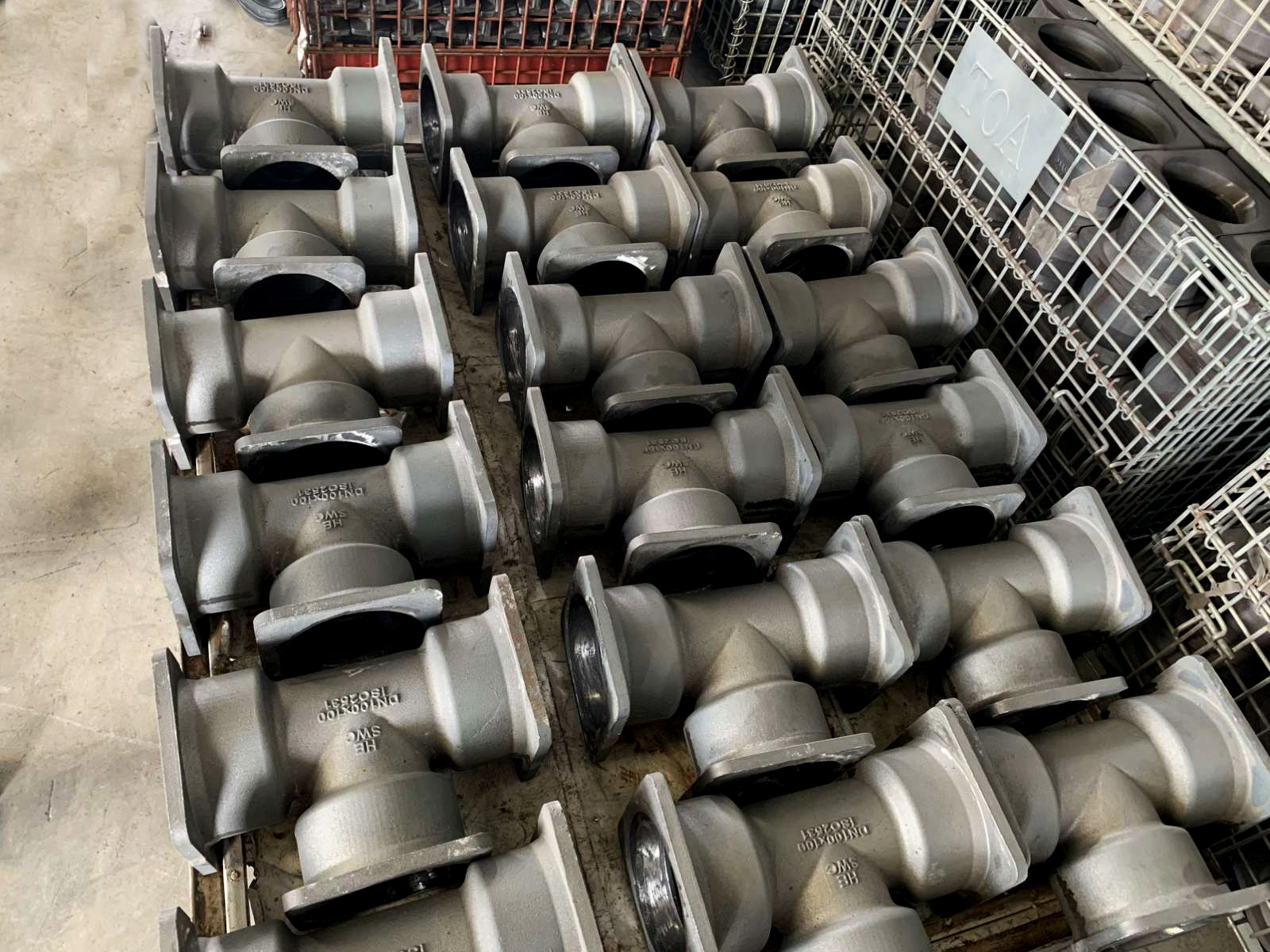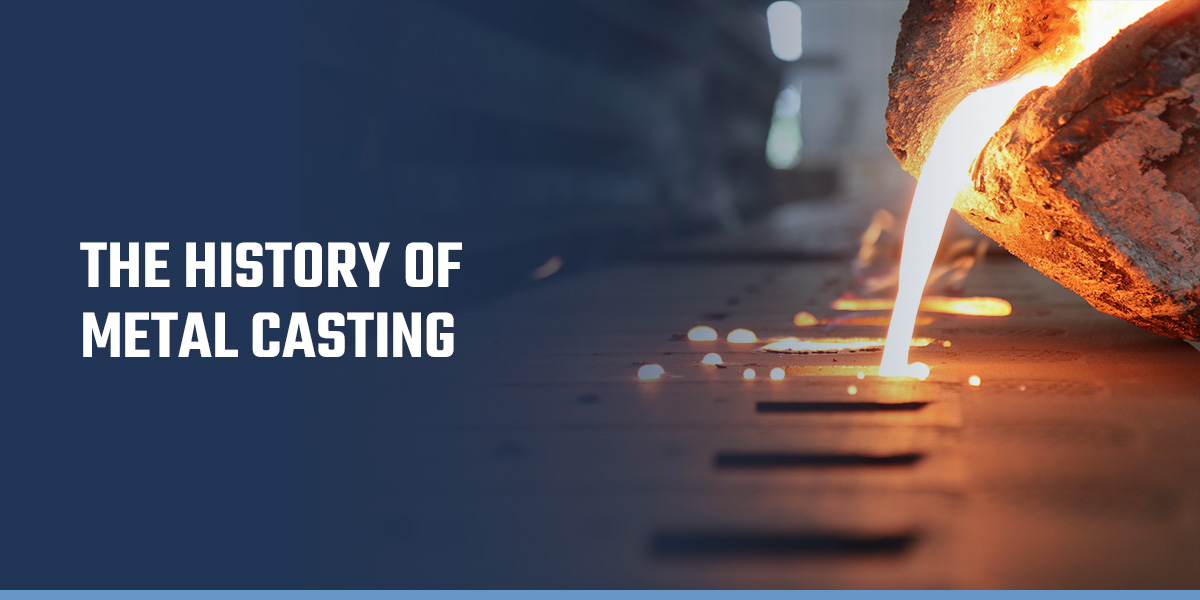The Role of Metal Casting beforehand Manufacturing Technologies
Metal Casting have significantly influenced the development of manufacturing technologies. They offer one-of-a-kind design adaptability, making it possible for the creation of elaborate geometries important for numerous applications. Modern spreading techniques are being improved by developments like 3D printing and automation. These growths not only improve performance however additionally address difficulties in accuracy and sustainability. As markets continue to advance, the role of Metal Casting continues to be vital in forming their future. What lies in advance in this dynamic field?
The Advancement of Metal Casting Methods
As the demand for accuracy and efficiency in production has expanded, the development of Metal Casting techniques has actually undertaken significant makeover. Historically, Metal Casting began with straightforward approaches such as sand spreading and lost-wax casting, which permitted craftsmens to produce elaborate forms. With time, advancements in innovation introduced procedures like die spreading and financial investment casting, improving accuracy and decreasing waste. Aluminum Foundry. The introduction of computer-aided style (CAD) and simulation software application revolutionized the drawing board, allowing manufacturers to prepare for possible issues and maximize designs before production. Furthermore, the growth of brand-new materials, such as sophisticated alloys and composites, has broadened the range of applications for Metal Casting. Automation and robotics have additional refined casting processes, improving consistency and efficiency. Because of this, the Metal Casting sector has adjusted to meet the needs of modern-day manufacturing, focusing on sustainability and advancement to stay competitive in an ever-evolving marketplace
Applications of Metal Casting in Key Industries
The developments in Metal Casting techniques have opened a broad selection of applications throughout numerous markets. In the automotive market, Metal Casting are integral for generating engine blocks, transmission real estates, and other necessary elements that require high toughness and durability. The aerospace market utilizes spreadings for intricate parts like wind turbine blades and architectural parts, making sure lightweight yet robust services for aircraft.

The building industry utilizes Metal Casting for structural aspects such as fittings and beams, contributing to the integrity of buildings and infrastructure. In the energy market, spreadings play a crucial role in manufacturing parts for wind generators and power generation devices, improving effectiveness and reliability. Additionally, the clinical field benefits from accuracy spreadings utilized in medical tools and prosthetics, showing the adaptability of Metal Casting across varied applications. This broad application underscores the value of Metal Casting in modern manufacturing techniques.
Benefits of Metal Casting in Modern Manufacturing
Metal Casting use many advantages that substantially improve contemporary production processes. One important advantage is layout versatility; Metal Casting permits for the development of complicated shapes and complex geometries that are impossible or usually difficult to achieve with various other making approaches. This capacity allows suppliers to optimize item designs for capability and performance.
In addition, Metal Casting can support a variety of materials, including aluminum, steel, and iron, which can be customized to fulfill details mechanical properties and deterioration resistance demands.

Cost-effectiveness is an additional remarkable benefit; Metal Casting processes can generate big quantities of get rid of minimal product waste, therefore reducing manufacturing expenses.
The sturdiness of cast steel parts contributes to the longevity of products, decreasing the demand for constant replacements. On the whole, the advantages of Metal Casting considerably add to performance, sustainability, and development within modern production environments.
Developments Driving the Future of Metal Casting
While standard Metal Casting methods have actually served the sector well for decades, current innovations are positioned to transform the field. Developments such as 3D printing innovation permit rapid prototyping and the production of intricate geometries that were previously unattainable. These technologies not only improve layout flexibility but also minimize waste check and shorten preparations. On top of that, the assimilation of automation and robotics in casting processes is improving operations, enhancing precision, and improving worker security. The growth of new alloys and composite products is allowing the creation of stronger, lighter spreadings customized for specific applications. Digital modern technologies, including expert system and machine understanding, are optimizing casting parameters and predictive maintenance, driving better high quality control. Jointly, these technologies are pressing the boundaries of Metal Casting, promoting higher effectiveness and sustainability in manufacturing, and positioning the industry for future growth and competition.
Obstacles and Solutions in Metal Casting Processes
As advancements in Metal Casting modern technology remain to reshape the industry, different challenges continue to be that makers need to deal with to completely take advantage of these developments. One significant problem is the variability in material buildings, which can bring about irregular high quality and performance. This irregularity commonly results from fluctuations in raw products and processing conditions. Additionally, the increasing prices of power and materials posture economic restraints, pushing suppliers to seek more reliable procedures.
To fight these obstacles, companies are progressively adopting automated systems and progressed simulation strategies to improve accuracy and uniformity. Executing top quality control steps throughout the production process also assists in discovering defects early. additional hints In addition, buying research for different materials might reduce costs and improve sustainability. By addressing these challenges with innovative services, the Metal Casting sector can improve performance and keep competition in the advancing production landscape.
Regularly Asked Concerns
What Materials Are Frequently Made Use Of in Metal Casting Processes?
Usual materials used in Metal Casting procedures include aluminum, magnesium, bronze, and iron. Each material possesses special buildings that cater to various applications, enhancing the versatility and functionality of the last cast products in different industries.
Exactly How Do Ecological Laws Impact Metal Casting Operations?
Ecological guidelines force Metal Casting operations to take on cleaner modern technologies and methods, typically raising manufacturing expenses. Conformity may result in innovative processes that reduce waste and discharges, ultimately advertising sustainability within the Metal Casting sector.
What Are the Safety And Security Steps in Metal Casting Facilities?
Safety procedures in Metal Casting facilities include proper air flow, individual safety devices, regular safety and security training, devices maintenance, and adherence to security laws, guaranteeing a secure environment for employees while minimizing threats connected with unsafe products and processes.
How Is High quality Controlled in the Metal Casting Process?
Quality assurance in Metal Casting involves rigorous examinations, including aesthetic analyses, dimensional checks, and material testing. Adherence to market standards and applying top quality monitoring systems guarantees that spreadings fulfill specified demands throughout the production process.
What Is the Future Job Overview for Metal Casting Professionals?
The future work outlook for Metal Casting specialists shows up promising, driven by improvements in modern technology and boosting need across different industries (Aluminum Castings). Growth in automation and sustainable techniques will likely develop brand-new possibilities in this market
Historically, Metal Casting started with easy approaches such as sand spreading and lost-wax spreading, which permitted artisans to produce intricate forms. Over time, advancements in modern technology presented processes like die casting and investment casting, improving precision and lowering waste. In enhancement, the medical area advantages from accuracy spreadings utilized in surgical instruments and prosthetics, showing the adaptability of Metal Casting across varied applications. Metal Casting supply countless advantages that greatly enhance modern manufacturing procedures. Typical materials used in Metal useful site Casting procedures consist of aluminum, bronze, iron, and magnesium.